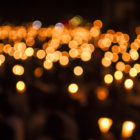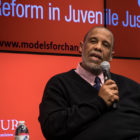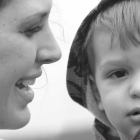
Thank You For Your Donations
|
Thanks to people like you who donated to our Center for Sustainable Journalism during 2018 NewsMatch, we raised more than $54,000.
Juvenile Justice Information Exchange (https://jjie.org/author/leonard-witt/)

Thanks to people like you who donated to our Center for Sustainable Journalism during 2018 NewsMatch, we raised more than $54,000.

Before the slaughter at the Marjory Stoneman Douglas High School in Florida, The New York Times produced a powerful graphic showing the millions of NRA dollars some individual, yes, individual, U.S. senators and members of Congress have received, juxtaposed with their prayers and condolences to the families of shooting victims. That kind of hypocrisy didn’t surprise. It’s what we, as a nation, have become.

James Bell, founder and president of the W. Haywood Burns Institute, told a gathering of juvenile justice reformers that it was time to begin “an uncomfortable” conversation about racial disparities in the youth justice system.

The director of the Annie E. Casey Foundation's* Juvenile Justice Strategy Group sounded an alarm Monday about a slowing of progress and an increase in the length of time youth are being incarcerated in some of the 300 sites of the Juvenile Detention Alternative Initiative.

The Center for Sustainable Journalism, the publisher of the JJIE.org, has been named a finalist by the Online News Association (ONA) in the Student Projects category.

Help us keep an important story alive by sharing it on Twitter and Facebook.

“Beyond Scared Straight” touts a program that does not work and demeans the very children Disney claims to shower with wholesome programing.

Last Friday 20 children aged six and seven were systematically executed by a young man, who has been politely defined as suffering from a personality disorder, but who in another time would simply have been referred to as a mad man. His baby-killing arsenal included a Glock 9-mm handgun, a Sig Sauer 9-mm handgun and a Bushmaster 223-cal semi-automatic rifle. Our president brushing tears from his eyes, said, “The majority of those who died today were children -- beautiful, little kids … They had their entire lives ahead of them -- birthdays, graduations, weddings, kids of their own.”
“Our hearts are broken.”
The president wept. We, as a nation, mourned. But we as a nation have tolerated a country where gun-related homicide deaths are 20 times greater than any other Western nation.

LAS VEGAS -- When the National Partnership for Juvenile Services annual symposium opened, Jason Bowser, a youth service director from Columbus, Ind., told an executive committee that one of the standing committees was focusing on the question of “What is a juvenile?”
It might seem an odd question for a gathering of folks who specialize in working with youth in the juvenile justice system, but really the question, even when not spoken, would be present in training sessions across the three-day symposium held here this week. Nor is it just a hypothetical question because nearly 250,000 young people under the age of 18 end up in the adult criminal justice system every year, according to the National Institute of Corrections report, “You’re an Adult Now: Youth in Adult Criminal Justice Systems.”
Liz Ryan, president and CEO of the Campaign for Youth Justice -- in a session reflecting the “Adult Now” theme -- reminded everyone that New York and North Carolina still consider juveniles to be adults at the ages of 16 or 17 in criminal proceedings, whereas in the rest of the states it’s 18. Ryan said a new report shows that each year 100,000 young people get sent to an adult facility and on any given day approximately 10,000 of them are in an adult facility. Once there, the correction system managers do have rules that treat the juvenile differently from the mainstream adult population. At times that means putting the kids into isolation.